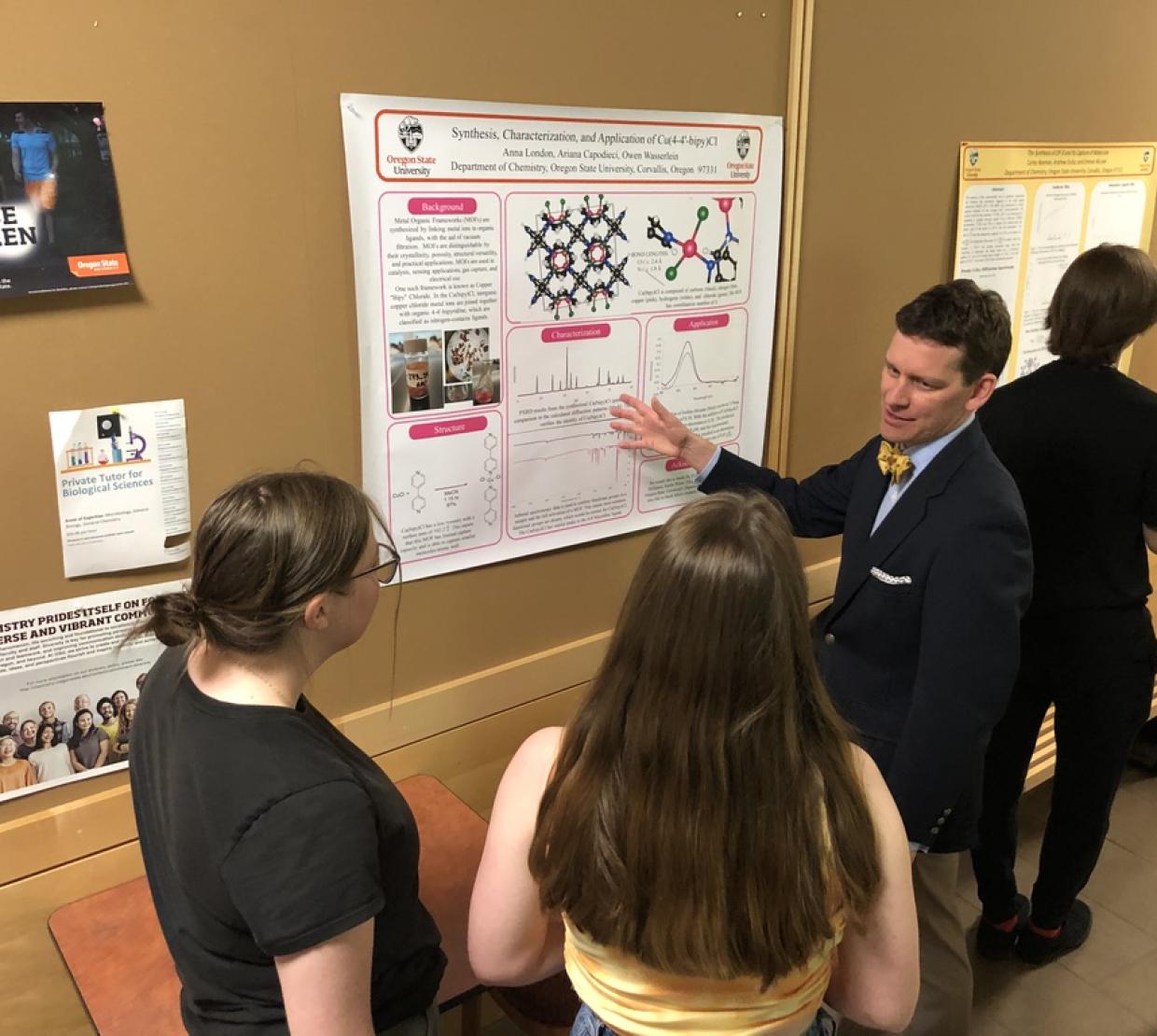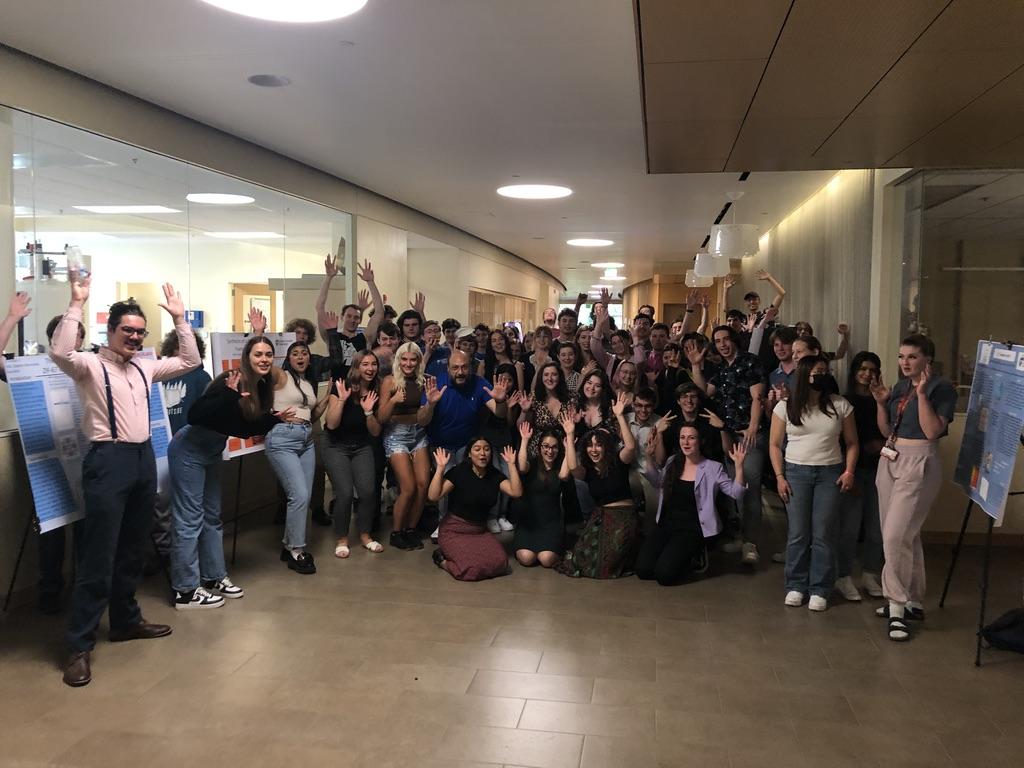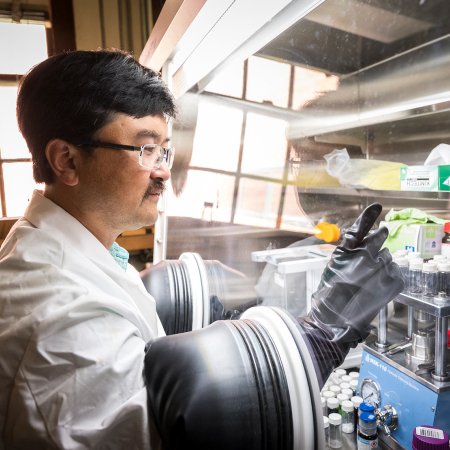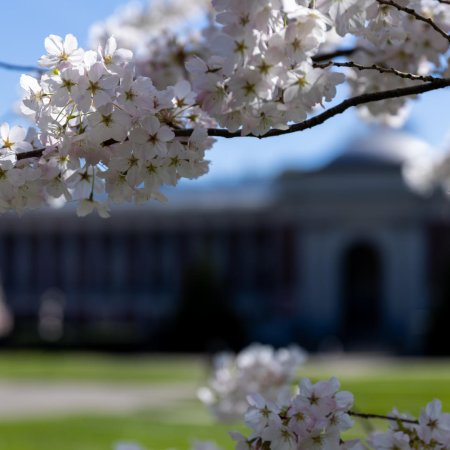Undergraduate research prepares students for the highs and lows
Emily Frechette isn’t the only student interested in the practical applications of classroom learning.
Dylan Pyle, a third-year student studying biochemistry and biophysics, also knows the feeling of waiting for classroom knowledge to become tangible. However, during the lab developed by Stylianou and Bach, he found himself more enthusiastic, productive and knowledgeable.
“In other classes, you don’t see the application of what you do. You might perform a titration or electrochemistry or something similar, but then what? What difference does that make?” Pyle said. “How can I apply this to something bigger and more useful? That’s what the MOF lab showed you, which was awesome.”
Stylianou felt it was important to test students' critical thinking and make the experiments fun. He and Bach integrated six key academic qualities into the course, drawn from the National Institute of General Medical Sciences’s Postbaccalaureate Research Education Program.
The qualities include autonomy, skillset development, critical thinking, community, team effort and inclusivity.
“We aimed for our students to take the lead in these experiments. Instead of having them conduct a single, straightforward experiment with uniform results, we encouraged diverse outcomes to teach them that failure is not necessarily negative but a part of their learning,” Kyriakos said. “This is part of the process, and it reflects the nature of research. In the lab, about 90% of our attempts do not succeed, and we wanted our students to understand this reality.”
At the start of the MOF laboratory, working in small groups, the students picked between four different MOFs to synthesize. Their task was to produce the chosen MOF they picked and utilize it for capturing a specific contaminant. The contaminants had different properties, including size and shape, and each one was only compatible with certain MOFs, allowing students to make unsuccessful selections.
“This experience will be beneficial for their future goals, regardless of their chosen path."
For both Frenchette and Pyle, failure was a huge part of the learning process.
“Ours didn’t end up doing what we wanted it to and that’s how it is in research. Because when you’re working on something, the chance of actually making something that works 100% of the time kind of defeats the purpose of research. There is so much trial and error, but I think it was a good learning opportunity,” Frechette said.
Her group successfully synthesized ZIF-8 (zeolitic imidazolate framework-8), a highly porous MOF, with the aim of testing its absorption capabilities with contaminants like methylene blue and iodine. Although it successfully absorbed methylene blue, the data yielded inconsistent results, she said.
Pyle’s group synthesized another MOF, Cu(bpy)Cl, which is a non-porous looking material.
“We applied it to capture iodine. Looking back, we shouldn’t have picked iodine, because it’s too big of an atom. It didn’t work for that, but maybe it captures other things super well. And I think that is what they were trying to get us to look into,” he said.
Students had the opportunity to visit Kyriakos’s Materials Discovery Laboratory (or MaD Lab), interact with graduate students and use laboratory equipment valued at more than several hundred thousand dollars.
“This experience will be beneficial for their future goals, regardless of their chosen path. Whether they continue in academia, industry or teaching, it is crucial for them not to feel intimidated by research and to learn how to present their scientific results,” Kyriakos said.
The course culminated in a student poster session at the end of the term. Students presented their research findings in smaller groups to classmates and in a larger session attended by faculty, graduate students and senior undergraduates. This experience strengthened their writing, oral communication and presentation skills. Stylianou said the feedback from both the faculty and students was overwhelmingly positive. Students thought the event was helpful in exposing them to new modes of science communication, while faculty members were impressed by the professionalism and caliber of work demonstrated.
The best part for Stylianou? That 80% of students reported that being able to control their own experiment helped them feel like a more active participant in the scientific process.
“The feedback we received was super positive. Some of them said, ‘We didn't know what undergraduate research meant and now we are highly interested in developing projects to better understand climate change, water pollution and purification and other areas.’ That is awesome.”





